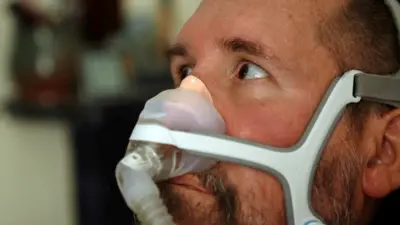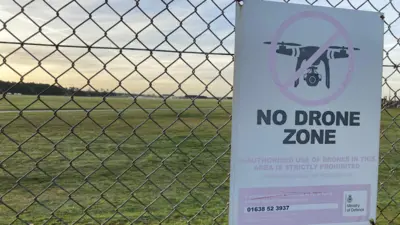We've updated our Privacy and Cookies Policy
We've made some important changes to our Privacy and Cookies Policy and we want you to know what this means for you and your data.
'Five-minute scan' to check child's brain development
Top Stories
- Author, Neil Bowdler
- Role, Science reporter, ҙуПуҙ«ГҪ News
Children's mental development could be recorded in much the same way we chart height and weight, say scientists.
They have devised a way of mapping development using an MRI machine and a mathematics programme.
The tool can be used to place children on a "maturation curve" just like we do with height and weight.
The scientists claim the technique might one day be used to spot early signs of disorders such as schizophrenia or autism.
Top Stories
Brain score
Last year, the team from Washington University School of Medicine in St Louis published a study on how brain function develops with age. They used magnetic resonance imaging (MRI) to trace blood and neuron flows within the brain.
That study suggested that in young children, connections within the brain appeared to be largely localised in particular regions. As we grow, we lose those short-range connections and develop longer-range connections.
These signals are fewer but sharper in the adult brain, the researchers believe.
What the same team has now done is to map this neurological development in 238 individuals aged seven to 30.
The individuals' brains were scanned using an MRI machine and then the mass of data was put through a complex algorithmic computer program to produce a single "score" representing brain maturity.
"From a five-minute scan we get 13,000 measurements of functional brain connections," says Dr Nico Dosenbach, who led the study.
"Then we can take the whole pattern for a given individual and boil it down essentially to a single measure which tells us something about an individual and in our case we were interested in how functionally mature an individual's brain is."
These single measures can then be placed on a maturation curve, where the researchers can plot the relationship between age and this development of longer-range brain connections.
What the data gives you is an indicator of how quickly or slowly relative to a median, a child's brain is developing.
Details of the new study are reported in the journal Science.
Top Stories
Spotting specifics
Dr Dosenbach is convinced the same technique could be used to spot specific conditions such as schizophrenia or autism, although comparative data for these conditions would first need to be collected and new mathematical programs built.
He also claims that his team's focus on brain function - and brain communication - can reveal more than the analyses of brain structure.
"One day I could see this being used in clinical diagnostics especially in neurological and psychiatric disorders," he says.
"In a young adult with schizophrenia, if you look at the anatomy of the brain, it looks totally normal whereas a clinician will clearly know this person is very ill and their brain doesn't function normally."
"Similarly with kids with autism, taking one look at the brain it's not obvious to a radiologist what's wrong, you have to do more advanced analysis like we're working on now to classify individuals as having autism or being at risk of having autism."
Last month, scientists in Britain said they had developed a brain scan which could detect autism in adults using MRI analysis of brain structure. The team at King's College London tested the method on 40 individuals, 20 of whom had Autism Spectrum Disorder (ASD).
The research team is now looking at whether the test would be effective on children.
Dr Gina GГіmez de la Cuesta, of the UK's National Autistic Society, welcomed the Washington study, but warned much work remained ahead.
"There is still a lot we need to learn about brain function and development so we welcome research such as the Washington study, which has the potential to give further insight into the neurological basis of conditions like autism.
"Previous research has shown differences in connectivity in the brain in autism. It may be valuable to repeat the Washington study to look longitudinally at the development of these connections in autism.
"Eventually, the researchers hope that brain scans might also be a useful diagnostic tool, however this goal is still a long way off and further research is required."
Top Stories
More to explore
Most read
Content is not available








